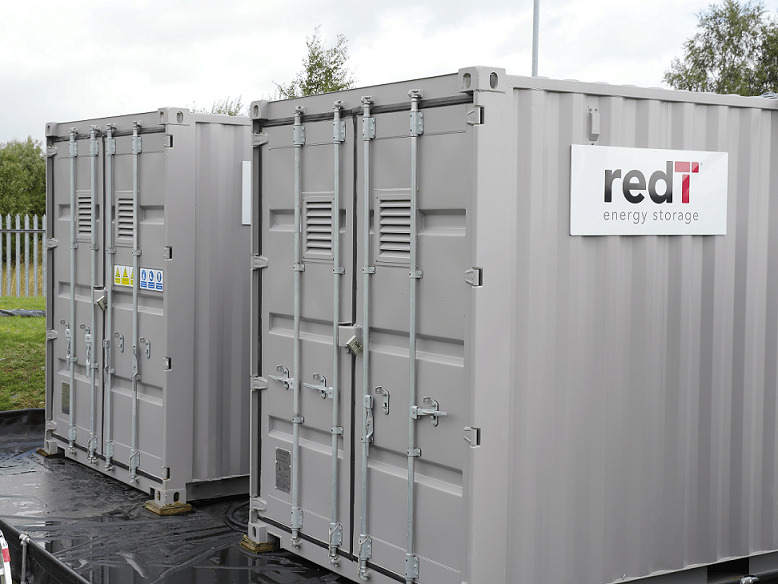
Image: RedT.
The Royal National Lifeboat Institution (RNLI) will use an 180kWh redT energy storage machine to time shift output from a 100kWp solar array at its Inshore Lifeboat Centre in East Cowes on the Isle of Wight.
The existing solar is predominantly used to power the facility’s operations, which include manufacturing and maintenance of the fleet of inshore lifeboats. However, a 15kW export constraint means any excess power can be wasted at times when the power is not needed, as RNLI energy manager Victoria Limbrick explained.
“We've got lots of PV installed at the moment and we're aware that when our factories are inactive the PV either has to be switched off or it just goes back into the grid. It was quite visible that we were losing a fair amount of power from the PV that we could have potentially been using.”
She added: “We are pleased to be working with redT. Their energy storage system will allow us to achieve more value from the solar power we generate at our Inshore Lifeboat Centre.”
The machine will also act as a backup generator allowing critical operations to continue in the event of a mains power outage. RNLI had planned to install a diesel generator for this purpose however this has now been put on hold as it may no longer be needed.
According to redT chief executive Scott McGregor, the 180kWh flow battery technology could be called upon to provide 12 hours of emergency discharge in the event of a power outage.
Finally, the system will help to balance the demand load of the site’s heat requirements, which include large demand from the facility’s manufacturing ovens.
Describing the trial project as the start of a commercial relationship with RNLI, redT chief executive Scott McGregor said: “Our energy storage machines are ideally suited to the long duration, energy intensive activity required to create ‘firm solar’ for sites such as this and we look forward to demonstrating the ability of our technology to not only reduce energy costs, but provide access to new revenue streams for UK charities such as the RNLI.”
Speaking to Clean Energy News this morning, McGregor added that the prospects for energy storage in the UK’s commercial and industrial (C&I) sector has improved significantly in recent months.
“I've been very vocal up until now about how [general] energy storage doesn't make economic sense in the UK. However we've spent the last four to five months tentatively modelling how to get the revenues laid up for storage, grid services and solar and some arbitrage and we're getting an 8-10 year payback now in the UK, which is pretty good for an infrastructure project.
“We believe now it is now commercial in the UK, we've got the right price for the system so it’s economic,” he said.
He added that redT had recently received orders from an agricultural finance group for 300kWh units “who are getting paybacks they are happy with”.
Despite this optimism, conservative investors like RNLI remain cautious over the cost of new storage installations, although Limbrick was clear that the charity has a strong interest in the technology as prices continue to fall.
“As a charity we need to make even more usage of the donations so we have to be extremely careful. At the moment it’s not something we'll be able to roll out on a large scale because of the cost but it is coming down month by month at the moment so it's definitely something we'll be looking to do once the balance is right between profit and payback,” she explained.
“It will depend on the project but 3-5 [year payback] would be a very interesting prospect, while 5-10 we would need to look at very carefully.”

